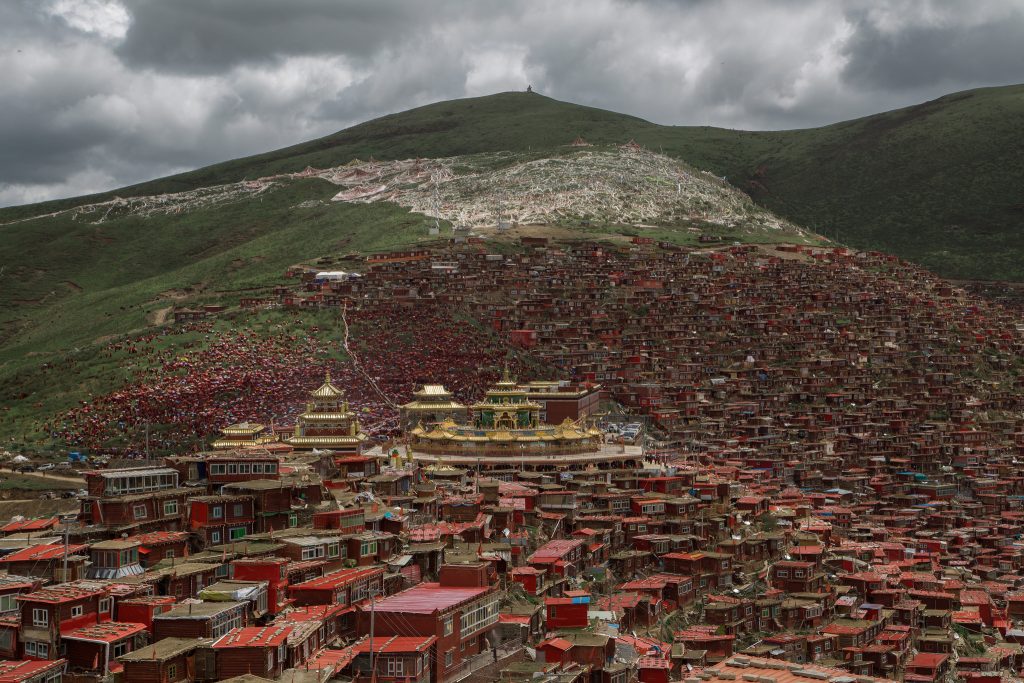Chinese authorities recently ordered that Larung Gar, the massive Buddhist village in eastern Tibet, must reduce the number of its residents to 5,000 by the end of September 2017.
Larung Gar is home to 20,000 monks and nuns and at times houses up to 40,000 people. The community was started by Khenpo Jigme Phuntsok (1933-2004) in the early 1980s to revive the educational tradition of Tibetan Buddhism after the Cultural Revolution.
A document outlining the eviction orders was posted by Human Rights Watch reads in part:
By September 30, 2017, the population of the encampment must be limited to 5,000 persons; the numbers of expelled persons and demolished buildings should basically correspond; correspondence between numbers of residents and residence buildings should be checked; masses of ordinary believers must be separated from monks and nuns; the monastery must be separated from the institute; the conduct of social administration within the monastery; the conduct of general services within the monastery.
The order specifies that 2,200 people have to leave this year—1,200 of them monastics.
“The 5,000 overall limit must be managed by 2017,” the document reads. “If it is discovered that it has not been done by September 30, 2017, the number of those to be expelled will be increased, in accord with the register of those present. The government will strictly check the numbers and residences of [expellees].”
Larung Gar is one of the most popular centers of Buddhist education. Chinese authorities previously cracked down on the encampments between 2000 and 2004. During that time, thousands of people were forced to leave and many dwellings were demolished.
Thank you for subscribing to Tricycle! As a nonprofit, we depend on readers like you to keep Buddhist teachings and practices widely available.
